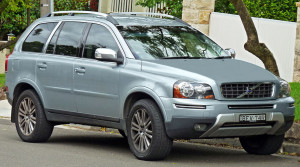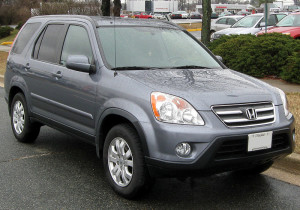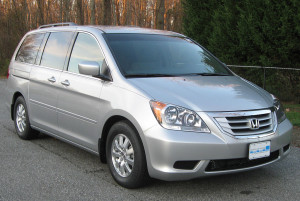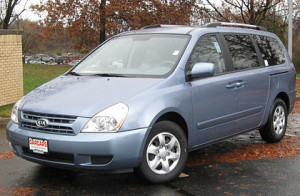
Recently, I wrote a guide to help parents, families, and individuals of all ages figure out how old was too old when it came to choosing a safe car, minivan, or SUV. I established a baseline called Safety Level 1, which involved vehicles with 3-point seat belts for front occupants, frontal driver and passenger airbags, and a good moderate overlap crash test score. This was the minimum level of safety I felt was worth buying, and I explained my rationale for these requirements.
Today’s article continues the series by focusing on a higher threshold of safety that I previewed in the prior article called Safety Level 2. I’ve discussed this level before when recommending safe and affordable vehicles for teenagers, and it’s the minimum level I consider for any vehicles we purchase in my family.
Safety Level 2: Level 1 + side airbags, good side impact scores, and ESC
Level 1 was about providing basic levels of safety for frontal crashes through a solid crash-bearing structure (the “good” score in the frontal moderate overlap collision), 3-point seat belts, and frontal airbags. Right now, any vehicle with those features will do about as well as any other vehicle at a given weight in most frontal collisions (with some exceptions, like the small overlap collision, to be discussed later). But what about side collisions? And what about preventing crashes to begin with?
This is where level 2 becomes crucial. Side airbags, along with good side impact scores, are the only devices standing between you and a near-certain death in a side impact collision at around 20 mph or above. Per the IIHS, when side torso airbags are present in cars, the risk of death from a side impact collision to the driver’s side are reduced by 26 percent; the reduction rises to 37 percent when head cushion airbags are paired with the torso airbags. The effect is even more pronounced in SUVs; with torso bags, the risk reduction is 30 percent, and it jumps to 52 percent when torso and head bags are both available. Combined with side structures that keep the vehicle reasonably intact, it’s easy to see why side airbags are a crucial safety addition.
Electronic Stability Control, or ESC, is described by the NHTSA as one of the most important innovations in car safety since the seat belt; in other words, it’s a huge step forward, which is part of why the NHTSA made it a requirement on all new vehicles a few years ago. Per the IIHS, the risk of a fatal single vehicle crash drops by 49%, or roughly in half, when vehicles are equipped with ESC. Considering that 50% of all fatal auto crashes are single vehicle crashes, simply being equipped with ESC slices off 25% from your global driving risk. That’s huge.
Now that I’ve explained what I find important at this level, here are examples of some of the oldest and most affordable vehicles that meet this safety threshold. The oldest dates back to 2004, but most are clustered around 2005:
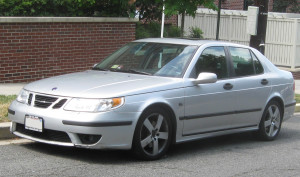 2004-2011 Saab 9-3
2004-2011 Saab 9-3
The oldest vehicle on this list is the Saab 9-3, which makes a great car for individuals or families with up to 3 children. I’ve written about the 9-3 before in my list of recommended teen vehicles and in a budget buy post in 2014, and I keep coming back to it because it’s packs so many safety features into a vehicle that can be found for so little money. In addition to the level 2 features I listed above, it also comes with daytime running lights and an acceptably strong roof (to be discussed in safety level 3).
The A4, like the 9-3, makes a great vehicle for individuals or families with up to 3 children. As with the 9-3, I also mentioned it previously in a budget buy post, and I like that it also comes with DRLs. However, the maintenance costs on the A4 and in Audis in general are well worth considering before buying one, as they tend to add up fast.
My 3 across guide for the A4 is available here.
The A6 is the larger sibling of the A4, and comes with a great safety record; it was the first car estimated by the IIHS to have ever achieved a driver death rate of zero, which occurred during the model years I listed above. Like the A4, it also comes with DRLs, which are programmable in the case of the A6, and like the 9-3, it also includes an acceptably strong roof. However, as with the A4, maintenance costs can be daunting.
My 3 across guide for the A6 is available here.
The Passat is essentially Volkswagen’s non-luxury equivalent of the A4, and is yet another great choice for individuals or families from a safety standpoint, if not from a maintenance standpoint. As with every vehicle so far, it includes DRLs and a roof score. However, unlike every vehicle so far, the roof score isn’t just acceptable, per the IIHS; it’s good. This distinction makes the Passat well worth considering for individuals or families looking for bonus safety features at this level.
My 3 across guide for the Passat is available here.
The BMW 5 Series made an appearance at Safety Level 1, and its smaller twin, the 3 Series, makes its entry at Safety Level 2 with an impressive array of features. Like the Audis and Volkswagens, you won’t own one because of its reliability or ease of maintenance, but it still makes a great individual or family vehicle if your priority is safety. Once again, DRL and and a roof score (acceptable) are present, as are the standard features at this level of ESC, side airbags, a good side impact score, and all of the benefits of Safety Level 1.
My 3 across guide for the 3 Series is available here.
The first generation Volvo XC90 set a landmark for safety that many vehicles took years to catch up to, at least in terms of crash test performance. Beyond the features common to this safety category, it is the first vehicle on this list to include a rollover sensor in the side airbags (a feature to be discussed in the next safety level), only the second with a strong roof (another feature to be discussed later), and the first with a good small overlap crash score (ditto). In other words, on paper, this is the safest vehicle in this list. However, it certainly isn’t the most reliable; the T6 was plagued with transmission problems, the early V8 had engine failures, and the model overall was buggy throughout the generation. If you know how to maintain it or know someone who does, however, it’s an excellent choice for family safety. Part of the generation had a driver death rate of 28 (2005-2008), while another part of it (2008-2011) had a driver death rate of zero.
My 3 across guide for the XC90 is available here.
The CR-V is the first and only small SUV on this list. It is also only the second vehicle on the list so far to feature a rollover sensor in the side airbags (a feature I’ll discuss more in the next level of safety). The CR-V is a great choice for individuals or families with up to 3 children, and is also one of my recommendations for safe and affordable vehicles for teen drivers. As an aside, it’s also likely to be one of the two most reliable vehicles on this list, as well as one of the two cheapest to maintain.
My 3 across guide for the CR-V is available here.
The first minivan to make the list, the Honda Odyssey, is still an excellent choice for families with up to 6 children. It’s also one of only three vehicles on this list to feature side airbags designed to active in rollover situations (the others being the XC90 and the CR-V, also by Honda). This generation of the Odyssey was also notable for having a very low driver death rate of 17. Besides its family-hauling abilities, one of my favorite things about the Odyssey is its high degree of reliability and low cost of maintenance, making it the most family-friendly vehicle on the list for larger families on a budget.
My 3 across guide for the Odyssey is available here.
Last but not least, the Sedona deserves mention at this safety level as only the second minivan to qualify. Like the Odyssey, it affords enough seating for large families while remaining within reach in price in the used market. Unlike the Odyssey, it doesn’t feature rollover-sensing airbags, and it also comes with a “poor” roof score rating. However, to be fair, so would the Odyssey, had it received an official rating from the IIHS, per Honda’s internal roof strength tests. This generation of the Sedona is notable for having a very low driver death rate of 16.
My 3 across guide for the Sedona is available here.
As you can see, there are a number of safe vehicles from the mid-2000s with essential features like good side crash scores, ESC, and side head/torso airbags. However, as I’ve noted, there are still improvements in safety available in the used market if you’re willing to increase your budget. What are these features and which vehicles have them? This is where my threshold for Safety Level 3 comes in; I look forward to discussing it further in a post in the near future.
If you find the information on car safety, recommended car seats, and car seat reviews on this car seat blog helpful, you can shop through this Amazon link for any purchases, car seat-related or not. Canadians can shop through this link for Canadian purchases.


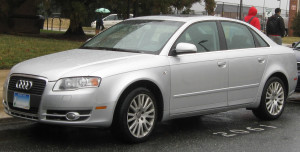 2005-2008 Audi A4
2005-2008 Audi A4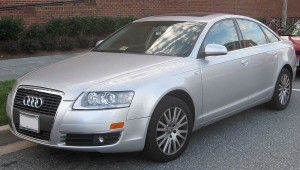
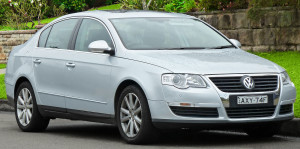
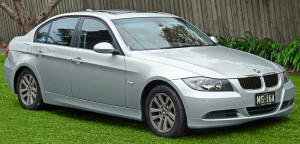 2006-2011 BMW 3 Series
2006-2011 BMW 3 Series